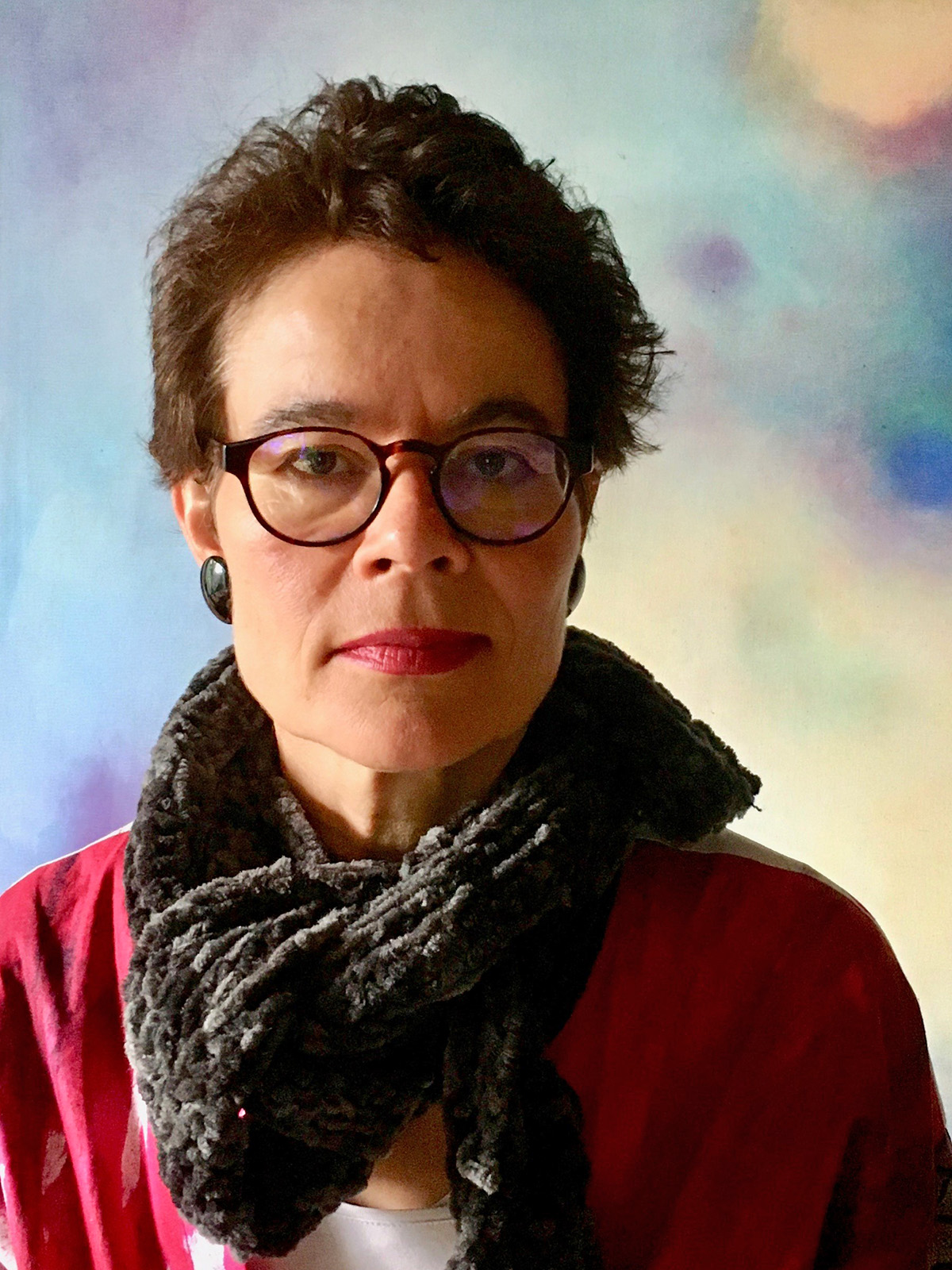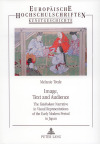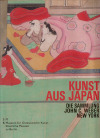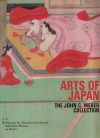Prof. Dr. Melanie Trede
Monographs & Edited Monographs
Journal Articles, book chapters, contributions
Online Media
Reviews
Conference Papers and Public Lectures
Teaching Experiences (select courses)
Publications
Monographs
| Politics, Devotion, and the Materiality of Illuminated Handscrolls in Japan: Visualizations of the Hachiman Legend in History (working title) |
|
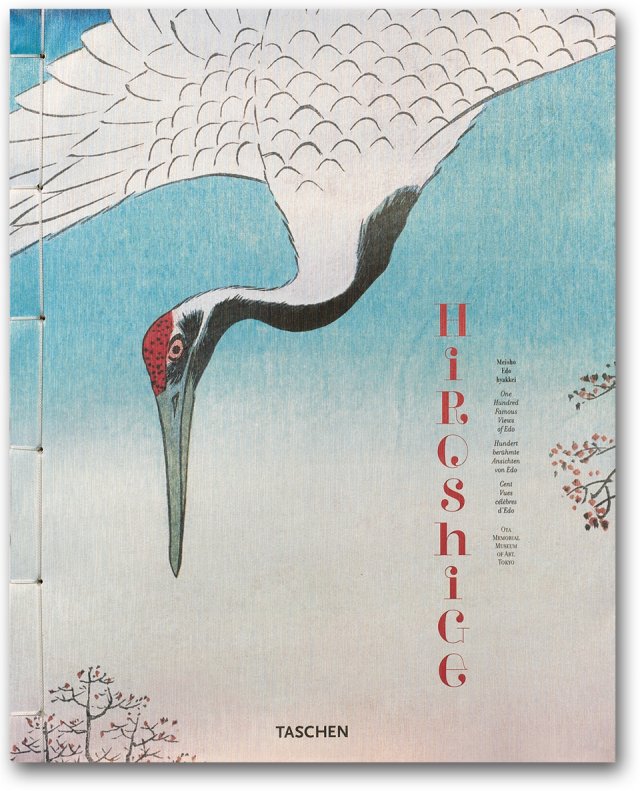 |
Hiroshige. One Hundred Famous Views of Edo with Lorenz Bichler, Cologne, New York: Taschen, 2007
Reviews:
|
|
Image, Text and Audience: The Taishokan Narrative in Visual Representations of the Early Modern Period in Japan Hamburg, New York: Peter Lang Verlag, 2003
Reviews:
|
Edited Monographs
|
Gender and Body in the Contemporary Arts Co-editor with Monica Juneja, Heidelberg: Springer Verlag (prospected publisher), editing process (2012) |
|
 |
Shifting Paradigms in East Asian Visual Culture: A Festschrift in Honour of Lothar Ledderose / Grenzverschiebungen in der visuellen Kultur Ostasiens: eine Festschrift für Lothar Ledderose co-editor with Burglind Jungmann and Adele Schlombs, Berlin: Reimer Publishers, 2011
|

|
Becoming Intense, Becoming Animal, Becoming… exhibition catalogue, co-editor with Martina Köppel-Yang, Heidelberg: Kehrer Publishers, 2009
Reviews:
|
|
|
Arts of Japan: The John C. Weber Collection; Kunst aus Japan: Die John C. Weber Sammlung New York editor of two separate exhibition catalogues in German and English (English version edited with Julia Meech), Berlin: Museum für Ostasiatische Kunst, Staatliche Museen zu Berlin, 2006 |
|
Impressions. The Journal of the Ukiyo-e Society of America Inc., vol. 22 (Fall 2000), Associate Editor |
Journal Articles, book chapters, contributions to exhibition catalogues
-
„Materialität, Mäzenatentum und Objektbiografien: Kanonisierungsaspekte in der japanischen Malerei,“ [Materiality, Patronage and the Biography of Objects: Aspects of Canonization in Japanese Painting] in Kanon Kunstgeschichte. Einführung in Werke und Methoden [Canon in Art History. Introduction to Works and Methods], Bd. 2: Neuzeit / vol. 2: Early Modern Period, edited by Kristin Marek and Martin Schulz. München/Paderborn: Wilhelm Fink Verlag, 2014 (submitted).
-
“Die Chineser stellen alles einfältig vor”: Schlaglichter auf europäisch-ostasiatische Auseinandersetzungen über Perspektive [“The Chinese render everything simple”: East Asian and European Negotiations on Perspective], in Bildkulturen. Die Perspektive im interdisziplinären Vergleich (Cultures of the Picture: The Perspective in interdisciplinary Comparison), edited by Christoph Markschies, Peter Deuflhard, Verena Lepper. Berlin: Akademieverlag, 2014 (forthcoming).
- “Pictorial Narratives”: Introduction and eight entries on narrative paintings in the collection of the Museum of East Asian Art in Cologne, in Splendid Impressions. Japanese Paintings 1400-1900, edited by Doris Croissant. Leiden: Brill/Hotei, 2011, 43-117.
- “’Konda sôbyô engi emaki’ no denrai ni tsuite no ichikôsatsu 「『誉田宗廟縁起絵巻』の伝来についての一考察」[Thoughts on the transmission of the Illuminated Handscrolls of the Karmic Origins of the Konda Imperial Tumulus], Ajia yûgaku special issue “Interprétation des représentations relatives à la diffusion du savoir / 「文化創造と知の発信としての図像解釈」, edited by Abe Yasurô, Takahashi Tôru, and Itô Nobuhiro (Fall 2011).
- “Eikyô gonen Hachiman engi emaki no ‘raifu” to sono ‘afutâraifu”「永享五年八幡縁起絵巻の「ライフ」とその「アフターライフ」」 “The Life and Afterlives of Hachiman Paintings dated to 1433 CE” [in Japanese], in The Potentialities of Works: To the Point that Japanese Literature Takes Form: 書物としての可能性―日本文学がカタチになるまで―, Proceedings of the 34th International Conference on Japanese Literature 第34回国際日本文学研究集会会議録,人間文化研究機構, 国文学研究資料館, Tokyo: Kokubungaku kenkyû shiryôkan, 2011, 171-179.
- “Eikyô gonen Hachiman engi emaki no ‘shôgai” to sono ‘yosei’”「永享五年八幡縁起絵巻の「生涯」とその「余生」」 “The Life and Afterlives of Hachiman Paintings (1433 CE)” [in Japanese], in Chûsei kaiga no matorikkusu 『中世絵画のマトリクス』 [The Matrix of Medieval Painting], edited by Sano Midori and Shinkawa Tetsuo 佐野みどり・新川哲雄 編, Tokyo: Seikansha 青簡舎刊, 2010, 220-247.
- “Vorwort: Körperkunst / Preface: Body Art,” in Becoming Intense, Becoming Animal, Becoming…, 2009, 7-11.
- “Ostasiatische Kunst, 3. Japan” [East Asian Art, 3. Japan], in Enzyklopädie der Neuzeit [Encyclopedia of the Early Modern Period], vol. 9 Naturhaushalt – Physiokratie, Stuttgart: Metzler'sche Verlagsbuchhandlung/C.E. Poeschel Verlag, 2009, 629-633.
- “Banknote Design as a Battlefield of Gender Politics and National Representation in Meiji Japan,” in Performing “Nation”: Gender Politics in Literature, Theater, and the Visual Arts of China and Japan, 1880—1940, edited by Doris Croissant, Catherine Vance Yeh, and Joshua Mostow, Leiden: Brill, 2008, 55-104.
- “Edo: Images of a city between visual poetry and idealized reality / Edo: Bilder einer Stadt zwischen visueller Poesie und idealisierter Wirklichkeit / Images d’une ville entre poésie visuelle et réalité idéale”, in One Hundred Famous Views of Edo, Cologne, New York: Taschen, 2007, 7-27.
- “Comment/Komento, Session II: Lives and culture depicted in illustrated materials: the early modern period in East Asia”, in Kanagawa daigaku 21seiki COE puroguramu shinpojiumu hôkoku 4, dai 2kai kokusai shinpojiumu “Zuzô, mingû, keikan: Himoji shiryô kara jinrui bunka wo yomitoku: Kanagawa University 21st Century COE Program Conference Series, Bulletin No. 4: The 2nd International Symposium: “Interpreting Human Culture through nonwritten materials: Perspectives on Illustrated Material, Folk Implements and Landscape [in Japanese and English], edited by the 2nd International Symposium Organizing Committee, Yokohama: Kanagawa daigaku 21seiki COE puroguramu, 2007, 145-150.
- 近代国家の象徴としての古代女神――紙幣における「神功皇后」の表象―― (Kindai kokka no shôchô toshite no kodai megami: Shihei ni okeru ‘Jingû kôgô no hyôshô: Ancient Goddesses as Symbols of the Modern Nation State: The Representation of ‘Empress Jingû’ on Bank Notes), in Kajima bijutsu kenkyû 2006, 327-338.
- „Lives of the Japanese Picture,“ in: Trede, Melanie, ed.: Arts of Japan: The John C. Weber Collection; / “Das wandelbare japanischen Bild”, in: Trede, Melanie, ed.: Kunst aus Japan: Die John C. Weber Sammlung, New York, both: Berlin: Museum für Ostasiatische Kunst, Staatliche Museen zu Berlin, 2006, 20-27.
- “Introduction” in Linda Nochlin: “Women Artists: the Japanese Impulse”, Second Chino Kaori Memorial “New Visions” Lecture, Kyoto: Medieval Japanese Studies Institute, 2005, 7-11.
- “Appell an den Kriegsgott: Ikonographische Innovationen im Dienst politischer Rivalität,” in Pfetsch, Frank R., Hg.: Konflikt, Heidelberger Jahrbücher, 2004, 255-277.
- “Terminology and Ideology: Coming to Terms with “Classicism” in Japanese Art Historical Writing”, in: Elizabeth Lillehoj (ed.): Critical Perspectives on Classicism in Japanese Painting, 1600-1700, Honolulu: Hawai’i Press 2003, 21-52.
- “Kurashishizumu to kanon keisei: 17seiki Nihon kaiga ni tsuite no bijutsushi gensetsu (‘Classicism’ and Canon Formation: Art Historical Discourse on Seventeenth Century Japanese Painting)”, Bijutsu Forum 21 no. 5 (2001), 65-69.
- “Shikaku ni yoru shôri: Nihon kinsei shoki monogatari kaiga ni okeru nitchû kankei no hyôgen to kaiga media no yakuwari [Victory via vision: Representations of “China” and the role of medium in Japanese pictorial narrative of the 17th century]”, in: Nishi Kazuo (ed.): Kenchiki no mawaributai: Jidai to dezain wo kataru [The turning stage of architectural history: a story told by time periods and design], Tokyo: Shôkokusha, 1999, 184-212.
- “Kerun tôyô bijutsukan shozô <Taishokan'e> no juyô bigakuteki kôsatsu (The 'Taishokan' Paintings in the Cologne Museum of East Asian Art -- A Study in the Theory of Reception Aesthetics)", Bijutsushi 141 (October 1996), 45-63.
- "The Ordering Vision: A Study in the Social Function of Early Edo Period Narrative Painting as Seen in an Album of Fan-Shaped Paintings", Transactions of the International Conference of Eastern Studies 41 (1996), 74-92.
- "Takehisa Yumeji: Shuppan ('Abreise') [Departure]", and three more entries in: Kritter, Ulrich v. / Wakabayashi, Misako (eds.): Japanische Buchillustration 1850-1985 (Japanese Book Illustrations 1850-1985), Göttingen: Goltze Verlag 1996, 126-133; 172-175.
- Morita, Yasukazu: "Der deutsche Holzschnitt und die Reformation (The German Woodblock Print and the Religious Reformation)", in: The National Museum of Western Art (ed.): Der deutsche Holzschnitt der Reformationszeit aus dem Besitz des Schloßmuseums / Museen der Stadt Gotha (German Woodblock Prints from the Period of the Religious Reformation - the Collection of the Schloßmuseum / Municipal Museum in Gotha) [Translation from Japanese into German], Tokyo: The National Museum of Western Art, 1995, 104-113.
- "Das Bild der Fremden -- Nanban-Stellschirme und Genremalerei im Westlichen Stil des 16. und 17. Jahrunderts (Images of Strangers - Nanban Screens and Genre Painting in the Early Western Style of the 16th and 17th Centuries)";
"Begegnungen zweier Kulturen -- Nanban-Kunst und Kunstgewerbe (Encounter of Two Cultures - Nanban Arts and Crafts)", in: Croissant, Doris / Ledderose, Lothar (Hrsg.): Japan und Europa 1543-1929, Berlin: Argon Verlag 1993, 235-239, 243-247. - "Die Große Gewebekrone Taishokkan (The Great Woven Crown - Taishokkan)", in: Schlombs, Adele / Ströber, Eva (eds.): Quellen. Wasser in der Kunst Ostasiens (Streams - Water in the Art of East Asia), Hamburg / Cologne: Museum of East Asian Art 1992, 71-73.
- Seven entries on the magazine Shirakaba (White Birch), in: Schamoni, Wolfgang / Wakabayashi, Misako (eds.): Buch und Literatur: Japan 1905-1931 (Book and Literature: Japan 1905-1931), Heidelberg 1990.
Online Media
- “Film with Melanie Trede on the Circulation of Images,” Nov. 2013
-
„Paper in the Laboratory: Material Science and Conservation of Historical Paper in an Intercultural Comparison“ (17.–19.7.2013). Ein Tagungsbericht, co-authored with Carla Meyer, Sabine Neumann, Rebecca Sauer and Sandra Schultz, Material Text Culture Blog 2013.7. 20 pp. DOI 10.6105/mtk.mtc_blog.2013.007.Meyer_Neumann_Sauer_Schultz_Trede; ISSN 2195-075X
-
“Materialität, Vergänglichkeit und das Rituelle Japanischer Querrollen: ein persönlicher Erlebnis- und Forschungsbericht”, Material Text Culture Blog 2012.9. 9 pp. DOI 10.6105/mtk.mtc_blog.2012.009.Trede ; ISSN 2195-075X
Reviews
- Alicia Volk: In Pursuit of Universalism: Yorozu Tetsugoro and Japanese Modern Art. Berkeley: University of California Press / Washington, D.C.: Phillips Collection, 2010. Art Bulletin (December 2011), 494-497.
- Melissa McCormick: Tosa Mitsunobu and the small scroll in medieval Japan, Seattle : University of Washington Press, 2009. In: Harvard Journal of Asiatic Studies 71:2 (December 2011), ***.
- Review article: JOSEF KREINER (ed.): Japanese Collections in European Museums. Reports from the Toyota-Foundation-Symposium Königswinter 2003, 2 vols., Bonn: Bier’sche Verlagsanstalt; vol. I (256 p.), vol. II (774 p.), maps, tables, a bibliography, and several indices, Japonica Humboldtiana 10 (2006), 141-153.
- “ANDREW M. WATSKY. Chikubushima: Deploying the Sacred Arts in Momoyama Japan, Seattle: University of Washington Press, 2004. 368 pp.; 64 color ills.; 86 b/w. $45.00,” in Art Bulletin 87:2 (Summer 2005), 343-346.
- Review article: Stephan von der Schulenburg (ed.): Mönche, Monster, Schöne Damen: Japanische Malerei, Buch- und Holzschnittkunst des 16. bis 18. Jahrhunderts, Ostasiatische Zeitschrift N.S. 1 (Spring 2001): 53-62.
- "...und sogar die Soyasoßenflasche. Zur Ausstellung 'Japanische Kultur: Die fünfzig Nachkriegsjahre' (...And Even the Bottle of Soya Sauce: On the exhibition 'Japanese Culture: The Fifty Postwar Years')", Mitteilungen der Deutschen Gesellschaft für Ostasiatische Kunst 16 (July 1996), 34-37.
Conference Papers and Public Lectures
-
12 January, 2014
八幡縁起絵巻のローカリゼーション – Localizing the Hachiman engi 37th International Symposium「か た ち」 再 考— 開かれた語りのために—/ Reconsidering “ Form”: Towards a More Open Discussion
National Research Institute for Cultural Properties, January 10-12, 201421 September 2013 -
24 November, 2013
Shrine Treasures as Lieux de Mémoire: The Hakozaki Hachimangû engi emaki「記憶の場」としての社宝:筥崎八幡宮縁起絵巻の考察
Workshop: Treasures, Repositories, Collections. Department of Art History, Zurich University in collaboration with Tokyo University -
21 September, 2013
Japanese Narrative Paintings Reloaded: Transcultural Adaptations in the Early Seventeenth-Century Conference: Japan and Britain, 1613: Parallels and Exchanges
London, SOAS & The British Library, 19-21 September, 2013 - 9 October, 2011
Who controls the past controls the future: The 1672 project of Hachiman engi handscrolls
The Early Modern 'Medieval': Reconstructing Japanese Pasts.
Conference, University of Michigan, October 8/9, 2011 - 30 June, 2011
Linearperspektive! – “Die aperspektivische Methode ist ‘wahrer’”: Ostasiatisch-europäische Blickwechsel (Linear Perspective! – “The a-perspectival method is ‘more true’”: East-Asian - European exchanges)
Academy lectures “Fluchtpunkte der Bildkultur” (Vanishing Points in Picture Cultures), Berlin-Brandenburg Academy of Sciences, Berlin - 8 April, 2011
Contemporary art exhibitions at the Museum of Asian Art in the future Humboldt Forum, National Museums of Berlin,
Statement at the Workshop of the International Advisory Board Humboldt Forum, Berlin, National Museums
- 13 January, 2011
Commentator and Discussant for the panel discussion on the pair of concepts “art/science” with papers presented by Dhruv Raina and Raphael Rosenberg.
Global Concepts? Keywords and their Histories in Asia and Europe, lecture series, Cluster of Excellence “Asia and Europe in a Global Context,” Heidelberg University - 27/28 November, 2010
「永享五年八幡縁起絵巻のライフとアフターライフ」 (“The Life and Afterlives of Hachiman Paintings (1433 CE),” invited lecture (in Japanese)
34th International Conference on Japanese Literature, 第34回国際日本文学研究集会, National Institute of Japanese Literature 国文学研究資料館, Tokyo, Tachikawa-City - 15/16 September, 2010“Categories of Ritualizing Violence in Japanese Illuminated Handscrolls: The Case of the Hachiman Legends”
Religion and Violence in Transcultural Contexts. Historicizing Traumatic Experiences from the Middle Ages to Modern Times International Conference, co-organized by Heidelberg University and the Hebrew University; Jerusalem - 25 May, 2010
“Die drei Körper der mythischen Heldin Jingū / The Three Bodies of the mythic heroine Jingū”
part of the lecture series: KörperBilder. Konzepte und Repräsentationen von Geschlecht, [BodyImages. Concepts and Representations of Gender], Interdisciplinary Forum for Gender and Diversity Studies, Faculty of History and Cultural Studies, Free University, Berlin - 7 May, 2010
“The Mythical Empress Jingū kōgō as Popular Icon of the Modern Japanese Nation-State”
Institut National des Langues et Civilisations Orientales (INALCO), Paris - 21 February, 2010
“Otto Kümmel and East Asian art in Germany: Transgressing disciplinary categories but reaffirming borders”
Transcultural Bodies – Transboundary Biographies. Border crossings in Asia and Europe, International Workshop, co-organized by Zurich University and Heidelberg University;
Indira Gandhi National Centre for the Arts, New Delhi, India - 27 October, 2009
“Intercultural Media Visions: Hiroshige’s Woodblock Prints and Omi Hakkei”
Creative Couples, Exhibition-cum-Concerts and Lecture series, Cluster of Excellence “Asia and Europe in a Global Context,” Museum of Ethnology, Heidelberg - 18-20 September, 2009
“Tracing the changing qualities of ‘knowledge’ in the transmission of the Illuminated handscrolls of the Karmic Origins of the Konda Imperial Tumulus”
Japanese Research Center, Colmar,
International Conference organized by Nagoya University and Strassburg University:
“The Interpretation of Iconographies as Cultural Creation and Transmission of Knowledge” - 22 July, 2009
“How Japanese is Japanese Art?”
paper as part of a series of lectures: „China, Japan and the Other
– East-Asian Identities in the Age of the Transcultural–“
University Nuremberg-Erlangen - 14 July, 2009
“Money makes the world go around”
Summer School, Cluster of Excellence “Asia and Europe in a Global Context,”
Karl Jaspers Centre, Heidelberg University - 10 June, 2009
“Reflections on the Mediality of Narrative Handscrolls”
International Workshop: “New Perspectives on Japanese Pictorial Narratives”,
Institute of East Asian Art History, Heidelberg University - 24/24 March, 2009
“The Life and Afterlives of Hachiman Paintings (1433 CE)”
Metropolitan Museum of Art, New York,
International Conference: „Belief and artistic culture in Medieval Japan / 中世日本の基層文化―信仰と芸術― - 18 March, 2009
“Hiroshige’s Potemkinsche Dörfer”
Museum of Applied Arts, Frankfurt - 4 February 2009
“Wie japanisch ist die japanische Kunst?”
Stuttgart, National Academy of Arts - 5 October, 2008
メディアの働き──八幡縁起の伝承が絵に描かれ、物質化されて、どう機能してきたか “What’s in a medium? Multiple Visualities, Materialities and Functions of the Legend ‘The Karmic Origins of Hachiman’”
Iwanami Bungaku research group “Image, Text, Media,” Tokyo - 9 July, 2008
“Stellschirmmalerei in Japan” (Screen Paintings in Japan)
Bundeskunsthalle, Bonn - 18 June, 2008
"Lives of a Japanese Picture"
Graduate School Transnational Media Events from Early Modern Times to the Present, University of Gießen - 12 June, 2008
“Ein neuer Blick auf Banknotendesign: Jingū kôgô als populäre Ikone der Moderne”
(A fresh look at banknote design: Empress Jingū as popular icon of Modernity)
Humboldt University, Mori Ôgai Gedenkstätte - 6 June, 2008
„Wie japanisch ist die japanische Kunst?“
German-Japanese Society, Industrie-Club Bremen, Am Markt 1 - Thursday, May 29, 2008
“Domestizierte Kriegsikonografie: Die Darstellung der legendären Kaiserin Jingū im 19. Jahrhundert” (Tamed Iconography of War: The depictions of the legendary Empress Jingū in the nineteenth century)
Austrian Academy of Science, and University of Vienna - Thursday, May 8, 2008
“Kunstausstellungen der 1930er und 1940er Jahre als ästhetische und politische Inszenierung: Tokyo in Berlin, Berlin in Tokyo” (Art Exhibitions of the 1930s and 1940s as aesthetic and political spectacles)
Museum of Asian Art, National Museums of Berlin - October 15, 2007
“Tokyo in Berlin, Berlin in Tokyo: Kunstausstellungen und Kulturdiplomatie”
Conference: Von, mit und über Japan reden - 120 Jahre Japanforschung in Berlin
Berlin Brandenburgischen Akademie der Wissenschaften, Gendarmenmarkt, Berlin - February 10, 2007
“Japanische Kunst und Weltkunstgeschichte” [Japanese Art and World Art History]
Japanese-German Cultural Institute, Cologne - July 12, 2006“Antike Amazonen als Heldinnen der Moderne: Der Fall Japan” [Amazones of Antiquity as Heroines of Modernity: The Case of Japan]
Public Lectures by Professors of the Center for East Asian Studies
Heidelberg University - May 6, 2006
"Geschichtswissenschaft und Kunsthistorie: Plädoyer für mehr Interdisziplinarität" [Hisotircal Sciences and Art History: a Case for more Interdisciplinarity]
Initiative of Historical Japan Studies,
Institute for Japanese Studies, Heidelberg University - February 1, 2006
“Wie japanisch ist japanische Kunst?” [How Japanese is Japanese Art?]
Lecture as part of the Studium generale lecture series at the Phillips-University, Marburg - November 10, 2005
“Mythos und Moderne: Die Formierung eines visuellen Nationalsymbols im meiji-zeitlichen Japan” [Myth and Modernity: The Formation of a Visual Symbol of Meiji-Period Japan]
University of Zürich, Faculty of Philosophy, Switzerland - October 22, 2005
Moderation of a Panel for the International Conference “Korean Wall Painting”,
Organised by Prof. Jong-Hee Lee-Kalisch
Free University Berlin, Department of Art History - September 2, 2005
“Mother or Man? Woman or Deity?: New Identities for Amaterasu and Empress Jingû in Modern Japan”
paper for the panel: “No Borders to Cross: Challenging the Buddhist/Shinto, Sacred/Secular, and other (Alleged) Divides in Artistic Representations of Divinities”
The 11th Conference of the European Association of Japanese Studies, Vienna, August 31 – September 3, 2005 - June 29, 2005
“Gibt es DIE Japanische Kunst?”
Inaugural Lecture as Newly Appointed Professor,
Heidelberg University, Alte Aula - June 10, 2005
“The Life and Afterlives of Hachiman Paintings (1433 CE)”
Center for Japanese Religious Studies, Symposium 2005: Foundation myths in Japan’s past & present
School of Oriental and African Studies, University of London, 9 and 10 June 2005 - April 27, 2005
“Myth, Mother, Money: A National Symbol in Meiji Japan”
Japan Research Centre Seminar Series,
School of Oriental and African Studies, London - December 2, 2004
“Gibt es Japanische Kunst?”
Rotary Club Heidelberg-Schloss,
Heidelberg, Hotel Europäischer Hof - October 29, 2004
“Creating National Symbols in Meiji Japan: The Changing Gender of the Mythical Empress Jingu kogo”
paper for the International Conference, “New Gender Constructs in Literature, the Visual and the Performing Arts of Modern China and Japan”, organized by Doris Croissant and Catherine Yeh
Heidelberg University, Internationales Wissenschaftsforum, October 27-30 - March 29, 2003
“Aesthetic Evaluations, Fragmentations and the Art Market of Japanese Handscrolls”
Paper for the panel “Objects in Pieces: The Culture of the Fragment in Japan”
The Association of Asian Studies, Washington D.C. - July 13, 2002
“Japanese pictorial narrative and the “end of creativity”?”
International Symposium, Creativity in East Asian Art History in honour of the Sixtieth Birthday of Prof. Lothar Ledderose
Heidelberg University, Department of Art History - April 17, 2002
“Malerei, Macht und Magie im Japan des Fünfzehnten Jahrhunderts: Ashikaga Yoshinoris Produktion von Hachiman Querrollen”
Heidelberg University, Department of Art History - April 7, 2002
“Yoshinori’s Patronage of Hachiman Cult Paintings”,
Paper for the panel “Miraculous Tales of the Ashikaga: Shogunal Patronage of Painted Engi in Medieval Japan”, organised by Melissa McCormick, Columbia University
The Association of Asian Studies, Washington D.C. - March 18, 2002
“Pictures and Politics in the 1430s: Ashikaga Yoshinori’s Hachiman handscrolls”
School of Oriental and African Studies, University of London. - November 30, 2001
“Noble Pursuits: Ashikaga Yoshinori’s Patronage of Hachiman Cult Paintings”
Edwin O. Reischauer Institute of Japanese Studies, Harvard University - November 1, 2001
“Desperately Seeking the Jewel: A Fresh Look at Taishokan Paintings”
Scholten Japanese Art, New York - August 11, 2001
“Ashikaga Yoshinori’s Patronage of Hachiman Cult Paintings:
Cultural Politics in the 1430s”
Paper for the panel “Politics of Arts Patronage in Japan”
Second International Convention of Asian Scholars (ICAS)
Freie Universität, Berlin, Germany - May 19, 2001
“Paintings That Matter: The Visual Metamorphoses of Medieval Short Stories in Seventeenth century Japan”
Department of East Asian Languages and Cultures, University of California at Los Angeles - March 29, 2001
“Print Culture of 19th and Early 20th Century in Japan”
Japan Society, New York - June 29, 2000
“Recent Research and State of the Field of Japanese visual Culture in the United States”
Ritsumeikan University, Kyoto - May 17, 2000
“Prince Genji and the Aviary: The Matching of Folding Screens in 17th century Japan”,
Japan Society, New York - May 1, 2000
“Collecting ‘Art’ in pre-Meiji Japan”
workshop organised for and at the Institute of Fine Arts; Introduction to the conference. - March 9, 2000
“Memory and Identity: pictures in Japanese ballad-drama books of the early 17th century”
Paper for the panel “The Informing Image: ‘Illustration’ in Early Modern Chinese
and Japanese Printed Editions of Narrative, Dramatic, and Poetic Texts”,
organized by Joshua S. Mostow, University of British Columbia, Vancouver
The Association of Asian Studies, San Diego, California - November 20, 1999
“Imag(in)ing History: The visual transformation of the Taishokan narrative”
New England East Asian Art History Seminar, Harvard University, Boston - October 17, 1999
“The Fine Arts of the Heian Period”
lecture for the educational outreach program: “The Fine and Performing Arts of East Asia”
Japan Society, New York - June 10, 1999
“Terminology and Ideology: Coming to terms with the term “Classicism” in Japanese art historical writing”
Inaugural Sanwa Symposium, June 10 to June 12, 1999
The Clark Center for Japanese Art; Visalia, California - May 3, 1999
“All’s well that ends well: Image, Medium, and Audience in Pictorial Narratives of Seventeenth century Japan”
Institute of Fine Arts, New York University - April 20, 1999
“Expanding Visions: Re-guarding Pictorial Narratives of Seventeenth century Japan ”
Department of Art History and Archaeology, Columbia University - February 20, 1999
Moderator of the panel “The Canon in Edo period art”
at the international workshop “Expanding Edo Art”,
Department of East Asian Languages and Cultures, Columbia University - November 5, 1998
“Victory via Vision -- Shikaku ni yori shôri. Nihon kinsei monogatari kaiga ni okeru nitchû kankei no hyôgen to kaiga media no yakuwari”
Tokyo National Research Institute for Cultural Properties - June, 25th-28th 1998
"gENDering the implied audience of Taishokan visual representations",
paper for the panel "Gender and Sexuality in Early Modern Japanese Art"
Panel organiser: Joshua Mostow, University of British Columbia, Vancouver
First International Convention of Asian Scholars (ICAS)
Noordwijkerhout, Netherlands - May 10th, 1996
"E no naka ni kanshôsha wo yomu -- Nihon kinsei shoki monogatari kaiga no shakaiteki kinô (Envisioning the beholder: A study in the Function of Japanese Narrative Painting)",
paper read in Japanese at the 41st International Conference of Eastern Studies,
National Education Center, Tokyo - May 28th, 1995
"Kerun tôyô bijutsukan shozô <Taishokan'e> no juyô bigakuteki kôsatsu (The 'Taishokan' Paintings in the Cologne Museum of East Asian Art, - A Study in the Theory of Reception Aesthetics)",
paper read in Japanese at the 48th National Conference of Japanese Art History,
Dôshisha University, Kyoto - February 1994
“Japan and Europe: Cultural and Scientific Encounters”, seminar at the School of Higher Education, Heidelberg
Teaching Experiences (select courses)
Lectures
- Japanese “Art” and Art Historiography of the 17th century
- Painting Programs in their architectural environment in Japan
- New Research in Japanese Narrative Painting
- Collecting histories in Japan
- Collecting, Sponsoring and Exhibiting ‘Art’ in Japan
- Japan ca. 1600: The Visual Construction of New Identities
Survey Courses
- East Asia in World History
- The Arts of Japan
- Medium and Techniques in Japanese visuality
Seminars
- Reading Images Transculturally
- Multi-Centred Modernisms: reconfiguring art of the twentieth and twenty-first centuries
(undergraduate and graduate seminar as part of a lecture series with guest speakers) - Gender as a Category of Global Art and Art History
- Selected Works of Japanese Modern Art in the John C. Weber Collection, New York
- Selected Works of Japanese Art in the John C. Weber Collection, New York
- Text and Image in 17th century Japan; Works in German Collections
- Politics and Patronage: Japanese Painting of the Muromachi Period
- Aspects of material culture of early modern China and Japan
- In and Out of the Canon: Pictorial Narratives of the Early Modern Period in Japan
- Gender Issues in Japanese Art and Art Historical Writing
- Collecting Japanese Art and the Art Market in New York City
- Readings on Collecting Histories
- Book Production and Canon Formation in Early Modern Japan
- Art and Architecture of the Momoyama Period
- The Ise monogatari in the Visual Culture of Japan



